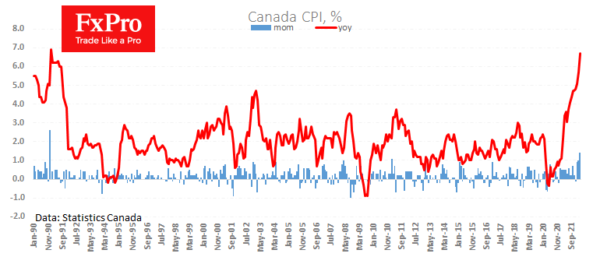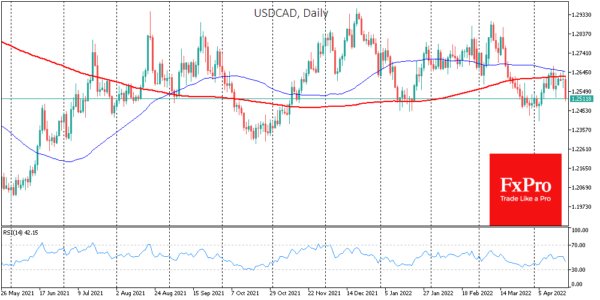Canadian consumer inflation rose stronger than expected, adding 1.4% for March and accelerating to 6.7% y/y from 5.7% a month earlier and the forecasted 6.1%.
The Bank of Canada last week raised its key rate by 50 points and announced a quantitative tightening in response to accelerating price growth. The fresh batch of data has triggered a new buying spurt in CAD against USD as it opens the door for even more tightening of monetary policy.
Canada is benefitting from a boom in commodity and energy prices, which allows the central bank to pursue a more aggressive policy normalisation than countries that are net importers of these commodities. In this situation, the CAD is getting support from three sides: more money coming into the country, more business activity, and a potentially stricter monetary policy.
The USDCAD is losing 0.75% to 1.2510, and it is trying to break the tie with 200-day MA, which has been resistant for the last two weeks. The important close frontier is 1.2475, where the pair got support in April and January. A consolidation below that might be the first signal to end the corrective bounce of the USDCAD and clear the way to 1.2000, which is the low of May 2021.














